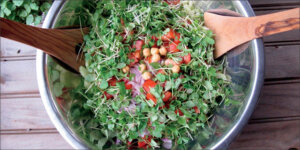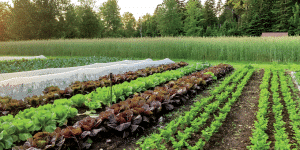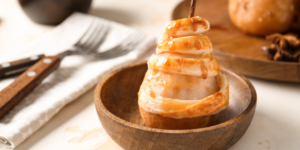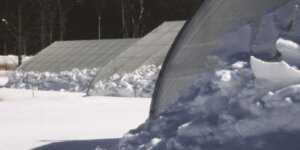Making Your Own Okra Cosmetics
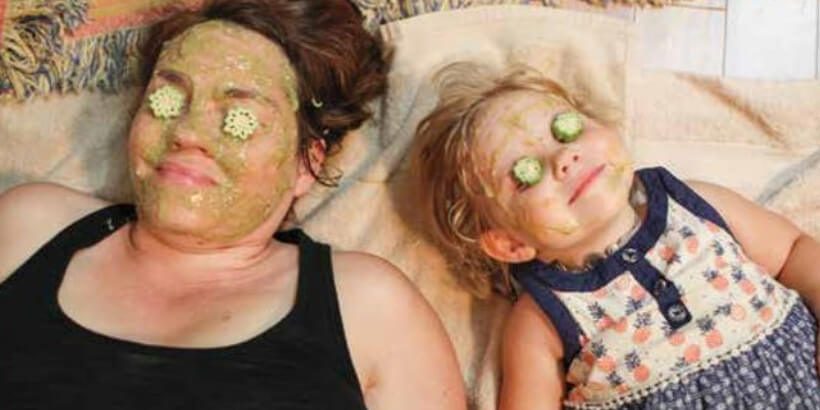
Okra, slime is gold! This pod-producing vegetable is a nutritional powerhouse and has been used throughout history for medicinal, culinary and cosmetics purposes. Discover the benefits of okra when eaten or use the slime from okra for glowing skin, thick shiny hair and strong nails, among others.
The following is an excerpt from The Whole Okra by Chris Smith. It has been adapted for the web.
Yang Guifei of China and Cleopatra of Egypt are both noted in history for their outstanding beauty, and that beauty has been attributed to their consumption of okra. While this claim is unsubstantiated internet knowledge, it’s interesting that okra slime could be the next aloe vera for skin and hair care. You can buy okra skin care products online, and the cosmetics company Lush once carried an okra-extract hair product. Shalini Vadhera, author of Passport to Beauty, writes of a Zimbabwean tradition of using boiled and mashed okra pods as a hydrating face mask.
I wanted to test out the Zimbabwean-inspired okra pod rehydrating face mask and invited Belle and Emily to attend a special spa session. I laid towels on the floor, turned the lights down low, and lit a candle infused with lavender. I promised foot massages if they’d both accept my experimental face mask. I kept the process for making the face mask very simple: about 1 pound (0.5 kg) of okra pods and some water!

Here I am, using okra mucilage as a natural hydrating hair conditioner. Photograph courtesy of Belle Crawford
Embracing the S-Word
Step 1. I selected pods that were not yet woody, figuring I was aiming for a smooth face mask and not an exfoliating one. (The older, woodier pods could work really well for making a body scrub.)
Step 2. I placed the pods in a saucepan, covered them with water, and boiled them for 5 minutes to soften them up and make sure there was no residual spininess. Spa Treatment 101: Don’t rub irritating trichomes into your loved one’s face.
Step 3. I poured the pods and the water into a blender and puréed them until the consistency seemed smooth and silky. The mixture bubbled green and gloopy and I felt like a witch over a cauldron.
Step 4. I let the mixture cool to warm before applying. Having never been to spa school, I smeared the mask onto their faces with a silicon spatula while my subjects/patients/victims (you decide) lay with their eyes closed, eyelids covered with fresh slices of okra.
Emily said it was nasty and didn’t wait the suggested 5 minutes before washing it off, but Belle lay still for a good 10 minutes. She made only one complaint—when I accidentally pushed some slime up her nostril. (Note: Halloween applications: fake snot.) Afterward she said her skin felt awesome and asked me to put the rest of the okra slime in the fridge so she could use it again another day.
Another popular cosmetic application is using okra slime as a hair product. Samantha Pollack’s YouTube channel includes a video titled Homemade Okra Conditioner for Natural Hair. Pollack commented that her uncle in Suriname washes his dreadlocks with okra leaves. Now, I haven’t used shampoo or conditioner on my hair in years, but I recently started swimming regularly and noticed how chlorine dries out my hair, so I decided to make myself the test subject for okra hair gel.
I followed the same steps as for making the face mask, but instead of blending the pods I strained out the slime using cheesecloth to isolate just the mucilage. I massaged the gel into my hair and left it there for 15 minutes before rinsing. I’d say it worked well. Belle, who is a much better judge of hair than I am, said my hair felt and looked soft!
Recommended Reads
Recent Articles
Does the cold weather have you dreaming about fresh greens and colorful salad? Grow and harvest sprouts indoors to make those dreams a reality! Follow this quick start guide to year-round greens for fresh salad greens in just a couple of weeks! The following is an excerpt from Year-Round Indoor Salad Gardening by Peter Burke.…
Read MoreWinter just got cozier! Our simple & nourishing soup is just what you need to cozy up on chilly days or nights! Delicious and nutritious, this soup is perfect for the whole family.
Read MoreIndulge in the sweet aroma of these pastry-wrapped pears! Easy to make and stunning to serve, these pastry-wrapped pears are a game-changer.
Read MoreNo heated greenhouse? No problem! Discover the secrets to thriving winter gardening without breaking the bank.
Read More





